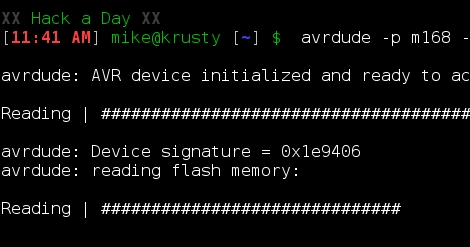
Here’s a nice little discussion about reading and writing AVR flash memory that [Windel] put together. He’s using an In System Programmer to read the flash memory from an ATmega328 using AVRdude, the programming software which we used in our AVR Programming Tutorials. He covers the particulars of the commands, how this might be useful, and finishes up with the gotcha’s involved in reading back code from the chip. We recently tried this out with that LED light bulb but were unsuccessful because the lock bits on the ATtiny13 chip had been set in order to protect the firmware from our prying eyes. Hopefully you’ll have more luck with these methods.

















